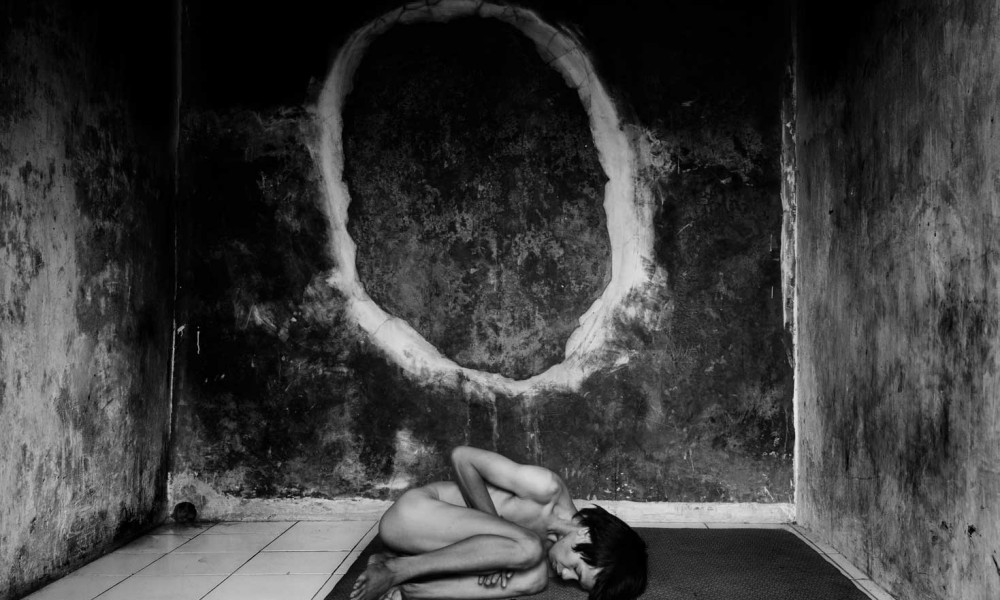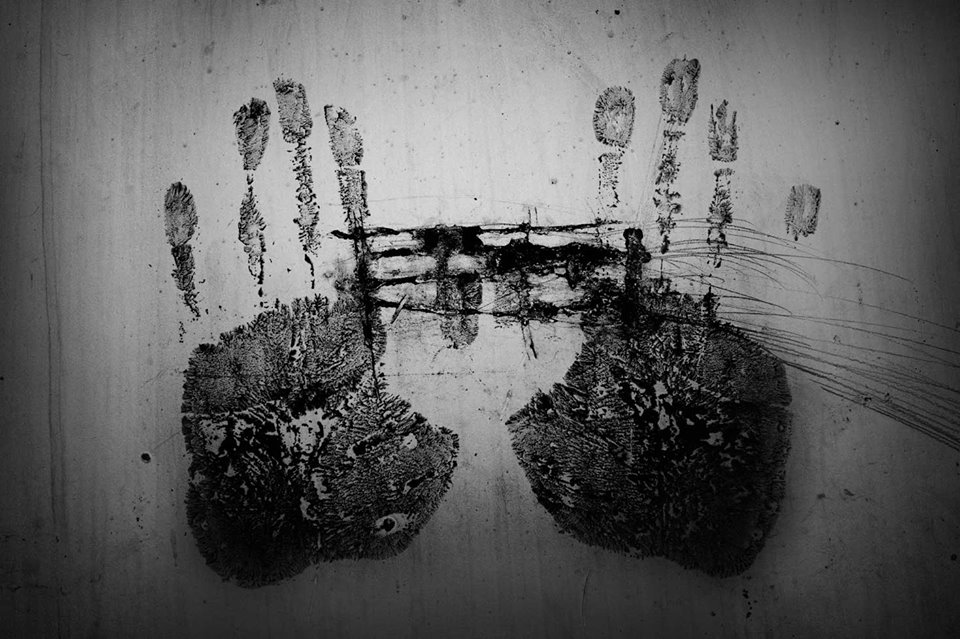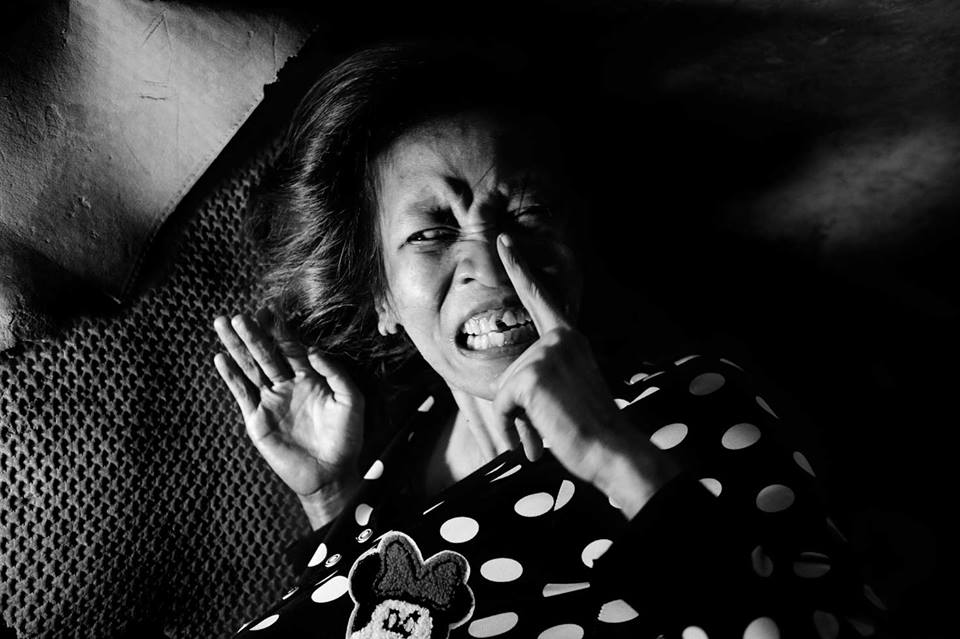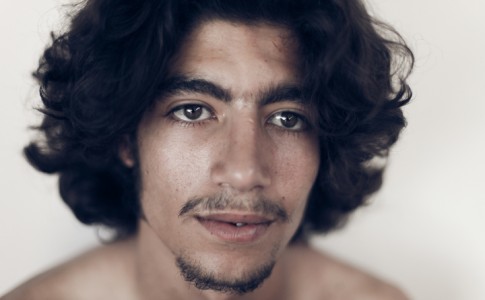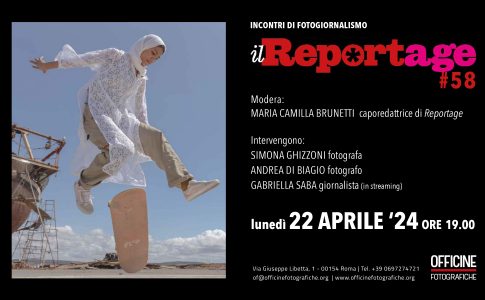Scott Typaldos è il fotografo vincitore della prima edizione de Il Reportage photojournalism award con il lavoro Butterflies / Chapter 4, realizzato in Indonesia. Butterflies è un progetto fotografico a lungo termine che documenta la malattia mentale in diverse parte del mondo. Il portfolio esteso tratto da Butterflies / Chapter 4 sarà pubblicato su Reportage n. 28 (ottobre – dicembre 2016).
In questa intervista abbiamo chiesto a Scott di parlarci del suo lavoro, delle motivazioni che lo spingono a documentare il disagio mentale, della sua idea di fotografia e di ciò che lo ispira.
You can find the english edition below.
Quando hai iniziato a lavorare a Butterflies, il tuo progetto a lungo termine sulla malattia mentale? Qual è la ragione dietro alla tua decisione di dedicarti a un tema così delicato? Puoi dirci qualcosa sui diversi capitoli di questo progetto?
Ho iniziato a lavorare su questo tema alla fine del 2010. Come prima cosa ho letto molti dati statistici, reports e ricerche sulla malattia mentale. In questa prima fase, l’idea e il mio coinvolgimento nel tema di ricerca erano ancora vaghi. Sapevo solo che volevo visitare degli istituti psichiatrici e avere la possibilità di confrontarmi con le persone che erano all’interno. Sono partito per l’Africa occidentale all’inizio del 2011 senza la chiara intenzione di lavorare solo su questo progetto ma anche a molti altri come, per esempio, i riti funebri. È stato lavorando sul campo che ho capito di avere finalmente trovato il tema che riguardava allo stesso tempo sia gli altri che me stesso. Qualcosa che unificava i miei approcci contradditori.
Attraverso questo progetto potevo sentirmi allo stesso tempo vicino e lontano. Dava alla mia sfera psicologica uno spazio lavorativo all’interno del quale evolvere. Non c’è altro modo per me di raggiungere questo stato. Questo progetto è diventato essenziale. Nessun altro lavoro mi ha mai invaso in questo modo.
Ho fotografato il primo capitolo in Africa occidentale, il secondo in Kosovo, il terzo in Bosnia, il quarto in Indonesia, il quinto – che è in preparazione – nelle Filippine. Sia a livello umano che fotografico ho cercato di darmi nuove sfide a ogni capitolo.
Lavorando per così tanti anni a un soggetto di così forte connotazione e stigma come la malattia mentale, come è cambiato – se è cambiato – il tuo punto di vista, sulle società contemporanee?
Il mio punto di vista è stato in costante evoluzione ed è diventato sempre più complesso. Sta raggiungendo il punto in cui non ho più certezze riguardo a cosa sia realmente la malattia mentale o da dove arrivi. Non posso dire che la malattia mentale esista come la maggior parte delle società l’hanno nominata ma allo stesso tempo sono stato testimone di grande dolore, cambiamenti e sconnessioni in tante persone. L’unica cosa che potrei essere pronto ad affermare è che sono il gruppo, il sistema e la società a creare la malattia. Il tipo di malattia mentale che un Paese sviluppa è uno specchio distorto e codificato delle sue stesse disfunzioni sociali e politiche. Questa nozione potrebbe spiegare perché certe malattie si sono trasformate in nuove malattie come alcuni batteri sono diventati resistenti agli antibiotici. Poiché le società evolvono, la malattia mentale è lì per ricordare alle persone i loro stessi tabù e le loro limitazioni. L’esempio perfetto è l’omosessualità, che è ancora considerata una malattia mentale in molti paesi perché mette a confronto le rispettive società con le loro stesse contraddizioni. La malattia mentale è quello che una società è incapace di metabolizzare o capire.
Butterflies / Chapter 4, il progetto vincitore de “Il Reportage photojournalism award” documenta la malattia mentale in Indonesia. Le immagini raccontano il drama di esseri umani segregati, vittime di torture fisiche e psichiche. Che tipo di impatto ha su di te un lavoro lungo e complesso come Butterflies?
Il progetto ha un impatto invasivo sulla mia vita quotidiana, sulle mie relazioni, sulla mia sfera psicologica interiore, e a volte sulla mia stessa salute. Fin dall’inizio non mi sono mai considerato come una persona sana che fotografava persone malate. Sono sempre stato un individuo disfunzionale tra altri individui disfunzionali. Questo non significa che possa pretendere di capire, o anche solo sentire, cosa significhi essere in una gabbia o in catene ma non ho mai avvertito o coltivato una forma di distanza.
Fotografo in uno stato si iper-dissociazione e ipersensibilità. In linea di principio questa affermazione potrebbe suonare come una contraddizione ma è un concetto essenziale per leggere le mie fotografie. È il risultato della mia vita precedente e delle fratture che questa ha creato.
Capitolo dopo capitolo la mia energia si è gradualmente indebolita mentre il mio coinvolgimento personale non ha mai smesso di aumentare. Questo fenomeno è allo stesso tempo un pericolo e una benedizione dal momento che mi sto avvicinando a ciò che ho cercato di scoprire. Questo progetto è un’eclisse e la mia motivazione arriva dal cercare di sapere cosa c’è dietro a questa massa-blocco.
È questa la vera domanda che sto ponendo agli spettatori: cosa stiamo nascondendo attraverso le nostre malattie mentali?
Che tipo di relazioni sei in grado di instaurare con i soggetti che devi fotografare per questo progetto? Puoi raccontarci un incontro che è stato particolarmente importante e significativo per te?
A questa domanda si può solo rispondere singolarmente, per ognuna delle persone che ho fotografato. Non c’è formula. Per ogni persona c’è una domanda, un codice da capire, uno schema da sciogliere, il sogno di una possibile soluzione. Non ci sono differenze tra i rapporti che stabilisco all’esterno o all’interno di un istituto psichiatrico. A volte mi sento molto vicino ad alcune persone e molto lontano da altre. Cerco di adattarmi a ogni persona. Una cosa che posso dire per certo è che ho un bisogno quasi patologico di entrare in connessione al livello più profondo. Posso sentirmi molto frustrato, a volte, quando non ci sono modi per raggiungere una persona e quando la collaborazione è impossibile. Il modo in cui riesco a malapena a giustificare il perché faccio queste fotografie è documentando la traccia di una connessione umana. Se questo non succede mi sento subito fuori posto, la mia presenza ingiustificata. Quasi tutte le fotografie in cui questo legame non è stato possibile vengono scartate in sede di editing.
A parte Alistair, che è presente nella prossima domanda, ricordo alcune persone per la stessa ragione che ho spiegato sopra. Molti di loro avevano un’intensità che non mi lasciava stanze in cui fuggire. Quella che nominerò è una donna di Jacarta (parte del progetto Butterflies | capitolo 4). A parte la sua bellezza e la particolarità dei suoi caratteri somatici, era l’incarnazione del mito di Narciso. Trascorreva i suoi giorni guardando la sua imagine nelle pozzanghere o nel riflesso di una finestra. Guardava a se stessa con gli occhi dell’innamorata. Dopo avere trascorso qualche giorno con lei e con altri pazienti, le ho regalato uno specchio. Immediatamente, in uno stato di estasi, ha iniziato a fissarsi con gioia intensa. Questa è l’immagine di lei che è rimasta nell’editing.
Il suo nome era Idele.
Forse avrei potuto o dovuto ricordare le situazioni più disumane ma ho conservato i miei ricordi più preziosi dalle situazioni che avevano un’espressività radiosa; quelle che preservavano la loro umanità in contrasto con le così tante situazioni allo stato animale che ho dovuto affrontare.
Fotografi il disagio mentale anche fuori dagli istituti psichiatrici. Sto pensando a “What is killing Alistair”, una documentazione davvero impressionante su una storia di bipolarismo. Ce ne puoi parlare?
Di tutte le persone che ho fotografato che sono chiamate o stigmatizzate come malati mentali, se dovessi conservarne una, sarebbe Alistair. Non perché le fotografie di Alistair siano migliori, o anche allo stesso livello, di altre fotografie che ho fatto. La ragione è che Alistair rappresenta il legame più stretto che sono riuscito a costruire. Una fotografia che è basata solamente sull’efficacia del prodotto finale e non lascia tracce di una relazione può essere interessante per lo spettatore ma io la sento incompleta.
L’altra ragione per cui Alistair è così importante è che si è trattato di un incontro casuale. Così tanto di quello che ho fotografato è programmato e ricercato. In questo caso specifico ho incontrato un uomo maniaco in una strada di Accra, [un uomo] che non era solo qualcuno che stava soffrendo di una patologia documentata, ma che era una fonte assolutamente unica di fuoco e di aria. La maggior parte degli individui sono schiacciati dalle malattie che la società gli impone. Alistair ha trasformato il suo stato in una filosofia profonda e in un modo di essere che mi ha contagiato alle fondamenta. È stata una delle rare persone che ho incontrato a inserire le sue idee e le sue azioni all’interno di un modo coerente di essere. All’inizio ogni cosa sembrava come un caos apparente ma ancora oggi sto decodificando e comprendendo le complessità di Alistair.
Il mio film su Alistair, che è molto più importante delle fotografie, inizia con una citazione da Victor Frankl “Ciò che deve fare luce deve essere disposto a bruciare”.
La sola presenza del fotografo sempre, per quanto mi riguarda, ha il potere (a volte il limite) di cambiare la realtà circostante. Quali soino gli effetti che la tua sola presenza ha in luoghi di totale segregazione e isolamento come gli istituti psichiatrici? Come lavori in situazioni create in spazi designate dall’esatta idea di assoluta mancanza di libertà e accesso esterno?
La mia presenza è il mio strumento principale quando faccio fotografie in questi spazi proibiti. Dal momento che mi considero un fotografo interpersonale e intimo, non potrei neanche considerare di scattare foto da uno pseudo-obiettivo punto di vista. Il mio sguardo è soggettivo. Ho fatto di tutto per spingere e sviluppare questo aspetto nella mia fotografia. Sono totalmente cosapevole che fondamentalmente modifico gli spazi nei quali entro e non considererei nemmeno l’azione stessa di fotografare se non lo facessi.
Negli anni ho lavorato utilizzando ogni tipo di strumento in base al paziente che mi trovavo davanti. Il mezzo più comune che uso è lo stato di surrealismo che sia io che la persona proviamo quando ci incontriamo. Un uomo occidentale davanti a una persona ingabbiata o incatenata che è stata ridotta a uno stato animale crea un’atmosfera da incubo. La dissociazione diventa qualcosa di quasi meccanico in questi casi. Qualche volta mi capita di sentire come se il mio corpo non esistesse più. Non posso pretendere di sapere cosa sentono loro ma qualche volta mi piace credere di essere insieme in questo strano mondo. Diventa un sogno ad occhi aperti che allo stesso tempo mi protegge e dà alle persone lo spazio di cui hanno bisogno per comunicare il loro stato.
Questo mondo fantasmagorico è il mio strumento più comune e quello in cui ho fatto alcune delle mie fotografie migliori.
La mia presenza ha creato un’ampia scala di stati d’animo, dall’euforia al desiderio sessuale, ammirazione, amore, rabbia, malinconia e molto spesso insulti e violenza. Mi sono adattato a tutte queste situazioni, sapendo che, in qualche caso, avevo contribuito a crearle. Catturare l’estremo dolore di altre persone si può sentire a volte come abusivo o perverso. Le interazioni sono molto complesse, contraddittorie, e non potrebbero mai essere riassunte in un breve testo. A parte ciò, sto ancora cercando di comprendere molte delle emozioni che ho vissuto.
Ci puoi dire un fotografo che è stato un maestro per te o che tu consideri una fonte di ispirazione?
L’unico fotografo che ho sentito di aver capito dalla sua fotografia è la mia cara amica Alisa Resnik. In realtà ho visto il lavoro di Alisa prima di incontrarla ma ho sentito una connessione profonda – fondamentale – che è stata poi confermata nella vita reale. Negli anni sono stato influenzato da una lunga lista di fotografi che potrebbe non essere così originale nominare. Oggi trovo la mia più grande fonte di emozioni e sfumature nella musica classica.
Scott Typaldos is the winner photographer of Il Reportage Photojournalism award first edition with Butterflies / Chapter 4, (Indonesia). Butterflies is a long-term photography project that documents a complex topic such as mental illness in different parts of the world. The extended portfolio from Butterflies / Chapter 4 will be published on Il Reportage n. 28 (October-December 2016).
In this interview we asked Scott to tell us about his work, the motivations that led him to document the mental disease, his idea of photography and what inspires him.
When did you start working on Butterflies, your long-term project on mental illness? What is the reason behind your decision to focus on this complex issue? Can you tell us about the different chapters of this long-term project?
I started working on this topic at the end of 2010. I first read a lot of statistics, reports and research about mental illness. At that point, the concept and my involvement in this subject was still vague. I only knew I wanted to see asylums and be confronted by the people in them. I left to West Africa in early 2011 without a clear intention to work on this particular topic but on many other topics such as funeral rites. It was only while working on the field that I understood I had finally found the topic which was both about others and myself; something that brought my contradicting approaches into one. Through this project I could both feel near and far. It gave a working space for my psychology to evolve in. There is no other way for me to reach that state. This project became essential to me. No other project had ever invaded me in this manner.
I shot my first chapter in West Africa, the second chapter in Kosovo, the third in Bosnia, the fourth in Indonesia and the fifth, which is in preparation, in the Philippines. On the human and photographic level, I’ve tried to give myself new challenges for each chapter.
Working for many years on a topic of such strong connotation and social stigma as mental illness, how has it changed your point of view, if it has changed, on contemporary societies?
My point of view has been in constant evolution and has become more and more complex. It’s gotten to the point where I no longer have any certainties about what mental illness is or where it comes from. I could not say that mental illness exists as most societies name them but I have simultaneously witnessed great pain, changes and disconnection for many people. The only thing I might still be ready to assert is that the group, the system and the society are the creators of illnesses. The type of mental illness a country develops is a distorted and coded mirror of its own social and political dysfunction. This notion could explain why certain illnesses have muted into new illnesses as some bacteria have become resistant to antibiotics. As society evolves, mental illness is there to remind people of their taboos and limitations. The perfect example is homosexuality, which is still considered a mental illness in many countries because it confronts their respective societies with their contradictions. Mental illness is what a society is unable to digest or understand.
Butterflies / Chapter 4, the winner project of “Il Reportage photojournalism award” documents mental illness in Indonesia. The images tell the drama of segregated human beings, victims of physical and mental torture. What kind of impact has a long and complex work like Butterflies on you?
The project has an invading impact on my everyday life, my relationships, my inner psychology, and at times on my own sanity. From the very start of the project, I did not consider myself to be a sane person photographing insane people. I always was a dysfunctional individual among other dysfunctional individuals. This doesn’t mean that I could ever claim to understand or even feel what it means to be caged or chained but I’ve never felt or cultivated much of a distance.
I photograph in a state of hyper dissociation and hypersensitivity. In principle this could sound like a contradiction but this concept is essential in reading my pictures. It’s the result of my prior life and the fractures it created.
Chapter after chapter my energy has gradually weakened while my personal involvement has never stopped increasing. This phenomenon is both a danger and a blessing as I am getting nearer to what it is I have been trying to discover. This project is an eclipse and my motivation comes from trying to know what is behind the blocking mass. It is this very question that I am asking to the viewers: What are we hiding through our mental illnesses?
What kind of relationship are you able to establish with the subjects that you have to photographs for this project? Can you tell us an encounter that was particularly important and significant to you?
This question could only be answered for each and every person I took pictures of. There is no formula. For each person, there is a question, a code to understand, a pattern to untangle, and the dream of a solution. There are no differences in the relationships I establish outside of an asylum and inside of one. I sometimes feel very close to some people while I feel very far from others. I attempt to adapt myself to each person. Something that I can assert is that I have an almost pathological need to connect on the deepest level. I can sometimes feel very frustrated when there are no means to reach a person and when the collaboration is impossible. The way I can barely justify shooting these pictures is by recording a human link’s trace. If it doesn’t happen, I quickly feel out of place, my presence feels unjustified Almost every picture in which this link was not possible are discarded during editing
Aside from Alistair who is part of the next question you are asking, I have remembered a few individuals for the same reason as I explained above. Most of them had an intensity that left me no room to escape. The one I will name was a woman from Jakarta (part of the Butterflies Chapter 4 projects). Aside from her beauty and the singularity of her facial features, she was narcissus myth’s incarnation. She spent her days looking at her reflection in puddles or in window reflections. She looked at herself with the eyes of a woman in love. After spending a few days with her and the other patients, I gave her a mirror as a present. She instantly turned ecstatic and stared at herself with intense joy. This is the picture of her that stayed in the edit. Her name was Idele.
Perhaps that I could or should have remembered the most dehumanized situations, but I’ve kept my most precious memories from the ones that were radiantly expressive; the ones that kept their humanity in contrast with the so many animalistic situations I have had to face.
You also photograph mental illness outside psychiatric hospitals. I am thinking of “What is killing Alistair”, a really impressive documentation on bi polar disease case. Can you tell us about it?
Out of all the individuals I have shot who are called or stigmatized as mentally ill, if I had to keep one, it would be Alistair. It is not because the pictures of Alistair are better or even on the level of some of the other pictures I’ve made. The reason is that Alistair is the strongest link I’ve ever managed to build. A photograph that is solely based on the final product’s effectiveness and leaves no trace of a relationship can be interesting to the viewer but feels incomplete to me.
The other reason why Alistair was so important is that he was a random encounter. So much of what I shoot is planned and researched. In this particular case, I met a manic man in a street of Accra who wasn’t just someone suffering from a documented illness but an absolutely unique source of fire and air. Most individuals are crushed by the illnesses society imposes on them. Alistair turned his state into a deep philosophy and a manner of being that has fundamentally infected me. He was one of the rare people I’ve met who put his ideas and actions into a coherent manner of being. In the beginning, everything seemed like an apparent chaos but until this day, I am still decoding and understanding Alistair’s complexity.
My film about Alistair, which is much more important than the picture, starts with a quote by Victor Frankl “What is to give light must endure burning”.
The mere presence of the photographer always, in my opinion, has the power (somehow the limit) to change the reality around him/her. What effect has your mere presence in places of total segregation and isolation like some psychiatric institutions? How do you work in situations that are created in spaces designated by the very idea of absolute lack of freedom and external access?
My presence is my main tool while shooting in these forbidden places. As I consider myself to be an interpersonal and intimate photographer, I could not even consider taking pictures from a pseudo objective point of view. My gaze is subjective. I’ve done everything to push and develop that aspect of my photography. I am totally aware that I fundamentally modify the spaces I enter and I would not even consider photographing if I did not.
Through the years, I have worked using all sorts of means depending on the patient I faced. The most common mean I use is the state of surrealism that the individual and myself feel when we encounter each other. A western man facing a caged or chained person who has been reduced to an animal state creates a nightmarish atmosphere. Dissociation becomes almost mechanical in these cases. I sometimes feel as if my body no longer exists. I could not claim to know what they feel but I sometimes like to believe that we are together in this strange world. It becomes a daydream, which both protects me and gives the person the space they need to communicate their state. This phantasmagoric world is my most common tool and the one in which I made some of my best pictures.
My presence has created a wide range of states ranging from euphoria, sexual desire, admiration, love, rage, melancholia and very often insults and violence. I have adapted to all these situations knowing that I created some of them. Capturing other people’s extreme pain can sometimes feel abusive and perverted. The interactions are very complex, contradictory and could never be summed up in a short text. Besides, I am still trying to sort out many of the emotions I have experienced.
Can you tell us of a photographer who has been a teacher for you or that you consider a source of inspiration?
The only photographer whom I felt I understood from her photography is my dear friend Alisa Resnik. I saw Alisa’s work before actually meeting her but felt a deep and fundamental connection, which verified itself in real life.
Through the years, I’ve been influenced by a long list of photographers who might not be so original to name. Nowadays, I find my greatest source of emotions and nuances from classical music.
—
Scott Typaldos was born in Switzerland in 1977. He is a member of the Prospekt photo agency. Since 2010, he has been extensively photographing and researching the topic of mental illness through his long term project called “Butterflies”.

